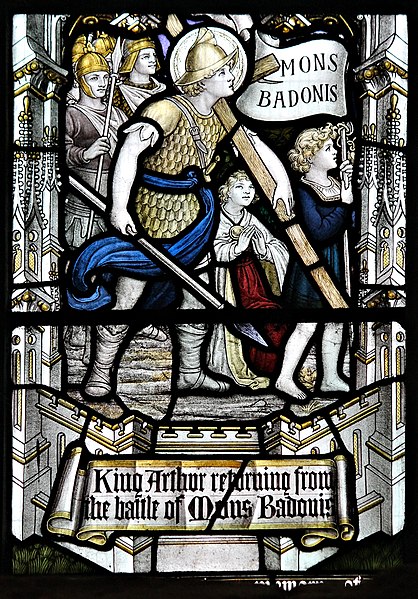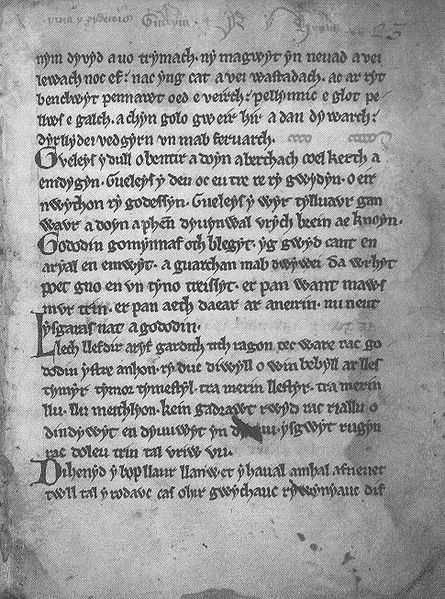Camelot is a legendary castle and court associated with King Arthur. Absent in the early Arthurian material, Camelot first appeared in 12th-century French romances and, since the Lancelot-Grail cycle, eventually came to be described as the fantastic capital of Arthur's realm and a symbol of the Arthurian world.
Gustave Doré's illustration of Camelot from Idylls of the King (1867)
Guinevere at Camelot in a 14th-century fresco at Siedlęcin Tower
Raimund von Wichera's Guinevere and the Court at Camelot (1900)
Winchester Castle's Great Hall with a 13th-century prop Round Table
King Arthur, according to legends, was a king of Britain. He is a folk hero and a central figure in the medieval literary tradition known as the Matter of Britain.
Tapestry showing Arthur as one of the Nine Worthies, wearing a coat of arms often attributed to him, c. 1385
King Arthur returning from the Battle of Mons Badonis (or Mount Badon). First reference to Arthur, found in early Welsh literature. Stained glass in Llandaf Cathedral, Cardiff.
Supposed former gravesite of Arthur at Glastonbury Abbey in Somerset
A page of Y Gododdin, one of the most famous early Welsh texts featuring Arthur (c. 1275)








